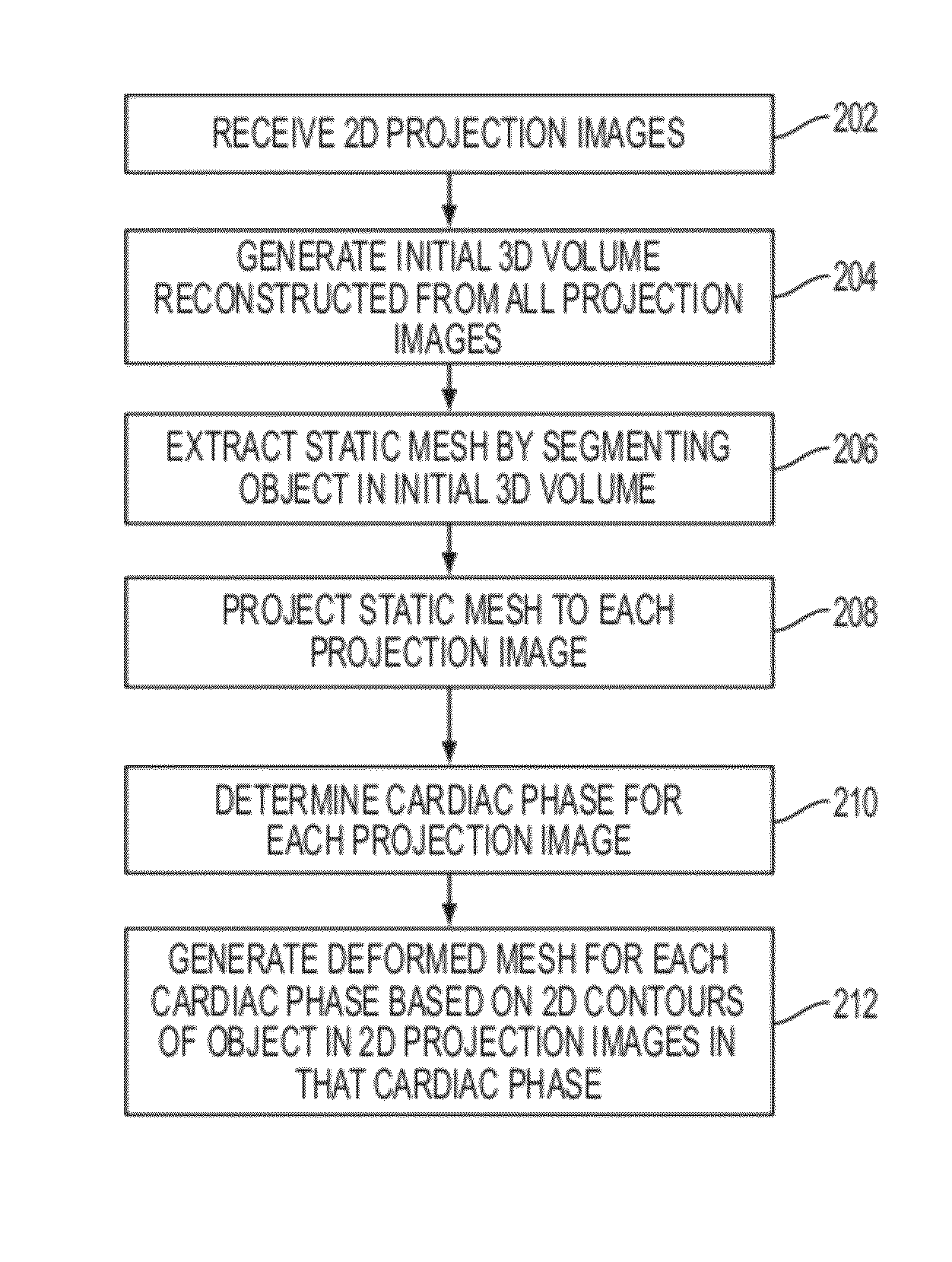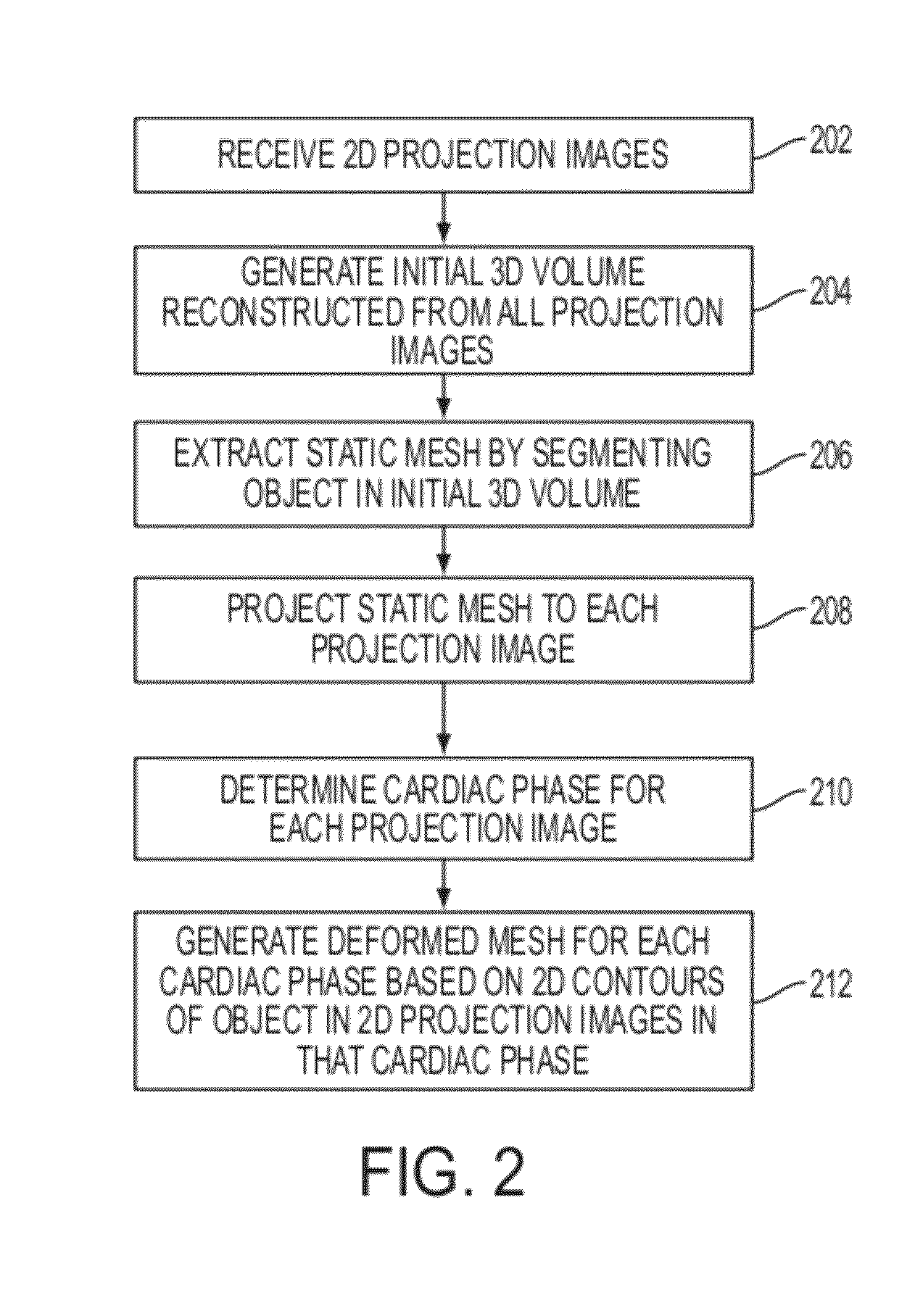Method and system for 3D cardiac motion estimation from single scan of C-arm angiography
a single scan and c-arm technology, applied in the field of cardiac imaging, can solve the problems of difficult to ask a patient to hold his or her breath for such a long period, the accuracy of the reconstruction 3d image remains a question, and it is difficult to estimate the motion of the cardiac muscl
- Summary
- Abstract
- Description
- Claims
- Application Information
AI Technical Summary
Problems solved by technology
Method used
Image
Examples
Embodiment Construction
[0020]The present invention is directed to a method and system for three-dimensional (3D) cardiac motion estimation from a single scan of C-arm angiography. Embodiments of the present invention are described herein to give a visual understanding of the 3D cardiac motion estimation method. A digital image is often composed of digital representations of one or more objects (or shapes). The digital representation of an object is often described herein in terms of identifying and manipulating the objects. Such manipulations are virtual manipulations accomplished in the memory or other circuitry / hardware of a computer system. Accordingly, it is to be understood that embodiments of the present invention may be performed within a computer system using data stored within the computer system.
[0021]Using a C-arm image acquisition system, it is possible to generate a 3D reconstructed computed tomography (CT) image by reconstructing a 3D image from 2D projections. However, due to cardiac motion...
PUM
 Login to View More
Login to View More Abstract
Description
Claims
Application Information
 Login to View More
Login to View More - R&D
- Intellectual Property
- Life Sciences
- Materials
- Tech Scout
- Unparalleled Data Quality
- Higher Quality Content
- 60% Fewer Hallucinations
Browse by: Latest US Patents, China's latest patents, Technical Efficacy Thesaurus, Application Domain, Technology Topic, Popular Technical Reports.
© 2025 PatSnap. All rights reserved.Legal|Privacy policy|Modern Slavery Act Transparency Statement|Sitemap|About US| Contact US: help@patsnap.com



